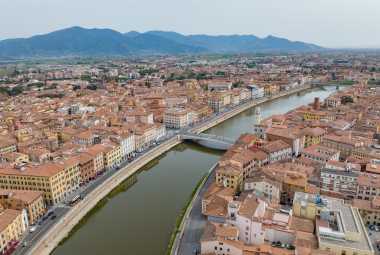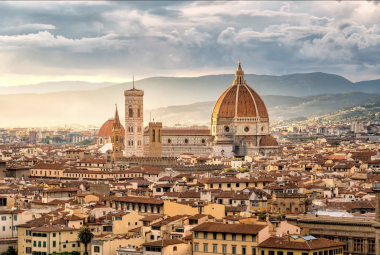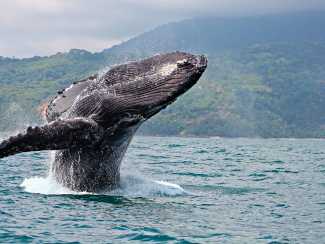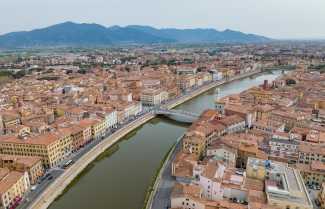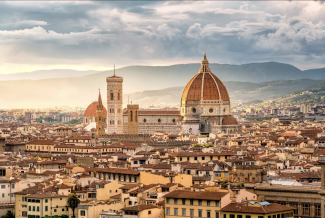Image by theaustralian.com.au
*Vacation Mode is a for-profit site. It contains paid banner advertisements that are generated and managed by a third-party network. This site also includes relevant affiliate links (both in the content and on the sidebar) all of which we do our best to clearly mark as such.
Quick Summary
- The Philippines and Japan are geographically and climatically distinct: the former is a tropical archipelago, and the latter is a mountainous island nation.
- Their histories and cultures are rich, with a blend of traditional customs and modern influences.
- Economically, both countries are driven by various industries and have strong foreign relations, with tourism featuring cultural, historical, and natural attractions.
- Japan is characterized by its mountainous terrain and temperate to subtropical climate, while the Philippines has a tropical maritime climate with high humidity and rainfall.
- Japan and the Philippines are strategically located in East Asia and Southeast Asia, respectively, influencing regional trade and maritime activities.
- Their topographies and natural resources shape economic activities, with Japan focusing on innovative agriculture and mining, and the Philippines on fishing, aquaculture, and renewable energy.
- Japan experiences four distinct seasons, affecting its agricultural practices and outdoor activities, whereas the Philippines has wet and dry seasons, impacting its agriculture and water management.
- The historical narratives of both countries include early interactions, colonial influences, and post-war relations, shaping their cultural identities.
- Traditional customs in Japan and the Philippines reflect their cultural heritages, including tea ceremonies and fiestas.
- Modern influences have transformed both societies, with technological advancements and global interactions shaping their economies and cultures.
- Their economies include diverse sectors like infrastructure, healthcare, and foreign trade, with Japan leading in advanced infrastructure and the Philippines focusing on improving its infrastructure and healthcare.
- Major industries include automotive and electronics in Japan, and agriculture and BPO in the Philippines, contributing to their economic growth.
- Both countries aim for economic growth and development, with Japan focusing on technological advancement and sustainability, and the Philippines on inclusive development initiatives.
- Japan and the Philippines have strong bilateral relations and trade partnerships, enhancing their global standing.
- Tourist attractions in both countries include natural wonders, historical landmarks, and activities catering to a wide range of preferences.
- Popular tourist destinations feature iconic landmarks and cultural sites, like Mount Fuji and the rice terraces of Banaue.
- Their food and cuisine reflect a diverse array of flavors, with traditional dishes and ingredients highlighting regional specialties and cultural legacies.
- Culinary influences from other cultures have enriched their food traditions, introducing a variety of flavors and techniques.
The Philippines and Japan are two fascinating countries with rich and diverse landscapes, cultures, and histories. In this comprehensive article, we will delve into the geography and climate of both nations, exploring their land areas, topography, and weather patterns. We will then journey through their captivating histories and vibrant cultures, discovering traditional customs, modern influences, and historical backgrounds. Uncovering the economic landscapes of the Philippines and Japan, we will examine their major industries, economic growth, and foreign relations. We will take a virtual tour of the tourism hotspots and attractions, from popular tourist destinations to cultural and historical sites, as well as natural wonders and activities. We'll explore the tantalizing world of Filipino and Japanese cuisine, from traditional dishes and ingredients to the influences of other cultures and popular food and drinks. Join us on this enlightening journey as we uncover the unique and captivating aspects of these two remarkable countries.
Key Takeaways:
- The Philippines and Japan have distinct geographical features and climates, with the former being a tropical archipelago and the latter being a mountainous island nation.
- The history and culture of both countries are shaped by their past and present influences, with traditional customs and modern developments coexisting.
- The economies of the Philippines and Japan are driven by different industries and have strong foreign relations, while their tourism offerings include a mix of cultural, historical, and natural attractions.
Geography and Climate
Japan and the Philippines, two diverse East Asian countries, showcase distinct geographical features and climate patterns that greatly influence their respective landscapes and natural environments.
Japan, being an archipelago located in the Pacific Ring of Fire, is characterized by its mountainous terrain, including active volcanoes such as Mount Fuji. The country experiences four distinct seasons, with a temperate climate in the north and a subtropical climate in the south.
On the other hand, the Philippines is an archipelago consisting of over 7,000 islands, known for its diverse range of landforms, including lush rainforests, beautiful beaches, and mountain ranges like the Cordillera and Sierra Madre. It is situated within the typhoon belt, resulting in a tropical maritime climate with high humidity and abundant rainfall.
Land Area and Location
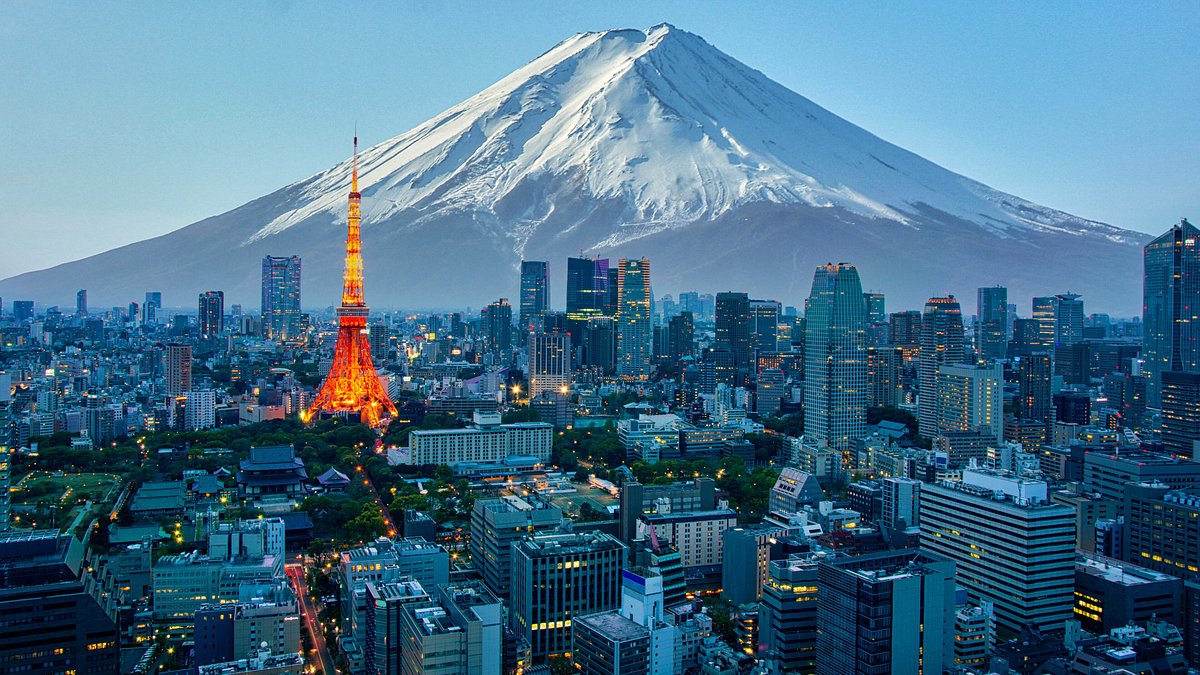
Both Japan and the Philippines exhibit unique land areas and strategic locations within the East Asian and Southeast Asian regions, contributing to their cultural, economic, and geopolitical significance.
Japan, an archipelago comprising 6,852 islands, is located in the Pacific Ocean off the eastern coast of Asia. It boasts diverse landscapes, from mountainous terrain to lush plains, with a cumulative land area of approximately 377,975 square kilometers.
On the other hand, the Philippines consists of 7,641 islands positioned in the western Pacific Ocean, covering a land area of around 300,000 square kilometers. These distinct landmasses and their geographical positions play a pivotal role in shaping the region's dynamics, with both countries influencing trade routes and maritime activities in the Asia-Pacific region."
Topography and Natural Resources
The topography and natural resource endowments of Japan and the Philippines shape their economic activities, resource utilization, and environmental sustainability, presenting unique challenges and opportunities for each nation.
Japan, characterized by mountainous terrain and limited arable land, has developed innovative agricultural techniques such as terraced rice paddies and intensive crop cultivation to optimize its land resources. The country's volcanic activity has also resulted in mineral-rich soils, which support the mining industry and contribute to its economic development.
In contrast, the Philippines, with its extensive coastline and abundance of marine resources, heavily relies on fishing and aquaculture. Both countries are exploring renewable energy sources, with Japan investing in solar and wind power, while the Philippines harnesses geothermal energy due to its volcanic nature.
Climate and Weather Patterns
The climate and weather patterns in Japan and the Philippines exhibit notable variations, encompassing diverse temperature ranges, precipitation levels, and seasonal phenomena that significantly influence the daily lives and activities of their inhabitants.
In Japan, the climate is characterized by four distinct seasons, namely spring, summer, autumn, and winter. Each season brings its own unique weather patterns, from the cherry blossoms of spring to the snowy landscapes of winter. The summer months can experience high humidity and occasional typhoons, impacting agricultural practices and outdoor activities. The geographical diversity of Japan, from the mountainous regions to the coastal areas, contributes to the regional variability in climate.
On the other hand, the Philippines experiences a tropical climate marked by wet and dry seasons. The rainy season, typically from June to October, brings heavy downpours and the risk of flooding and landslides, while the dry season, from November to May, sees less precipitation and higher temperatures. This climatic pattern influences the agricultural calendar and water resource management strategies, with adaptation measures such as rice paddies and irrigation systems in place to cope with the fluctuating water availability.
History and Culture
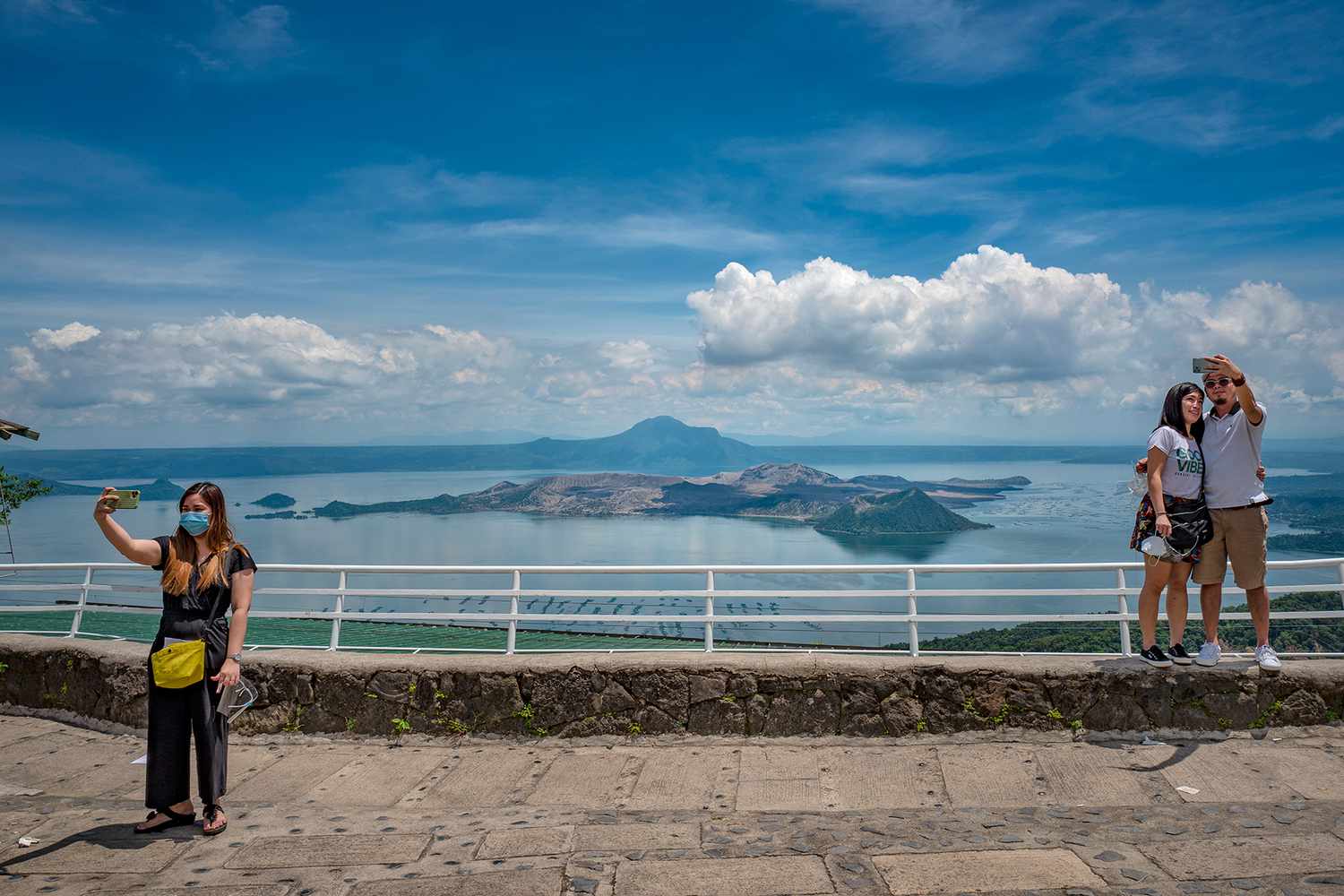
The historical narratives and cultural legacies of Japan and the Philippines reflect centuries of societal evolution, early interactions, and post-war relations, shaping the identities and traditions of these East Asian and Southeast Asian nations.
The intertwined histories of Japan and the Philippines date back to the early exchanges between Japanese traders and Filipino natives. These interactions laid the foundation for cultural exchanges, influencing art forms, culinary traditions, and religious practices.
The colonial eras brought profound influences, with Japan's brief but impactful occupation of the Philippines during World War II leaving a lasting imprint. Post-war, the two nations have cultivated diplomatic ties and shared economic ventures, leading to a fusion of contemporary influences on their societies and traditions. For more information, you can visit this source on Japan-Philippines relations.
Historical Background
The historical backdrop of Japan and the Philippines encompasses pivotal events such as the Imperial Japan era and the establishment of the Second Philippine Republic, marking significant milestones in the national narratives and collective memories of these two nations.
Japan's Imperial era, spanning from 1868 to 1947, witnessed profound political and societal transformations, including the rapid modernization and industrialization of the country, and its expansionist policies culminating in participation in World War II. This period deeply shaped Japan's identity and international relations.
Conversely, the Second Philippine Republic, established during the Japanese occupation in 1943, marked a challenging period of resistance and struggle, ultimately leading to the country's independence from colonial powers and the emergence of its own national sovereignty.
Traditional Customs and Beliefs
The traditional customs and belief systems of Japan and the Philippines reflect the rich tapestries of cultural heritage, encompassing influences from historical figures like Emperor Meiji and movements such as the Katipunan, contributing to the diverse cultural landscapes of both nations.
These customs are deeply rooted in the historical and societal fabric of the countries, shaping the values, rituals, and expressions of their people. In Japan, customary practices like tea ceremonies, kimono-wearing, and the art of bonsai cultivation are steeped in centuries-old traditions, symbolizing harmony, respect, and refinement.
On the other hand, the Philippines boasts a diverse array of indigenous customs and belief systems, ranging from the intricate rituals of the Igorots to the vibrant festivities honoring patron saints with fiestas. These traditions hold significant meanings, often intertwining spirituality, community, and familial ties.
Modern Influences
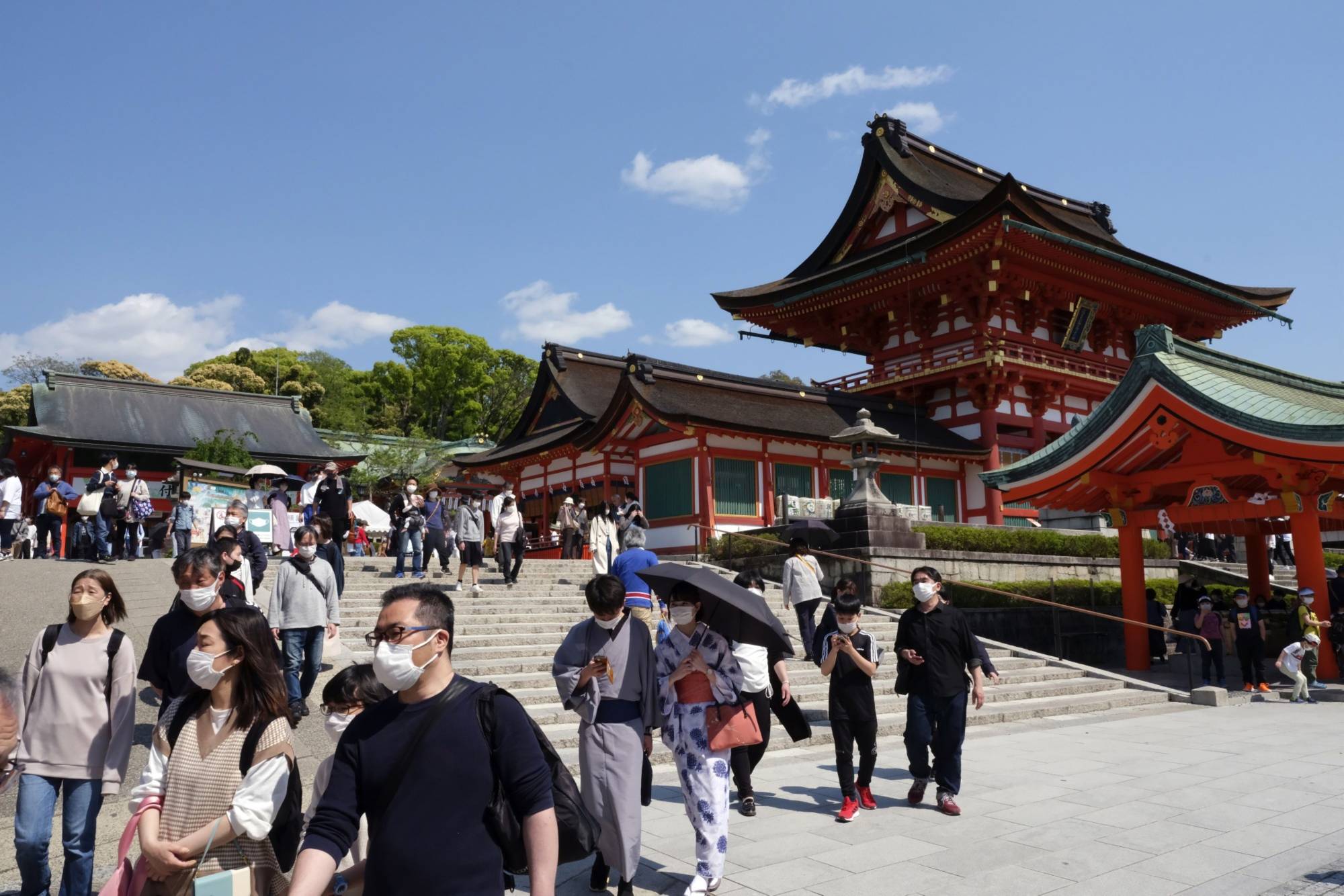
Modern influences on the contemporary societies of Japan and the Philippines encompass a spectrum of global interactions, including the impact of the United States and influential figures like General Douglas MacArthur, shaping the modernization and cultural dynamics of these two nations.
Along with the Western influence, technological advancements have played a pivotal role in transforming both Japan and the Philippines into modern societies. The widespread adoption of technology has reshaped the economic landscape, leading to the emergence of globally competitive industries in both countries. The influx of international businesses and investments has spurred urban development and infrastructure modernization, contributing to the overall growth and evolution of these nations.
Economy and Industries
The economies of Japan and the Philippines encompass diverse sectors such as infrastructure, healthcare, and foreign trade, driving their respective pathways towards economic prosperity and global partnerships.
Japan stands as a global leader in advanced infrastructure, boasting efficient railway systems, state-of-the-art highways, and high-speed internet connectivity. Japan’s universal healthcare system ensures access to quality medical services for its citizens. In terms of international trade, Japan maintains strong partnerships with key global players, leveraging its technological expertise and manufacturing capabilities.
In contrast, the Philippines has been investing heavily in improving its infrastructure, particularly in transportation and telecommunications. The country is also enhancing its healthcare facilities to provide better services and access to healthcare for its growing population. The Philippines actively engages in international trade, with a focus on exports such as electronic products, garments, and agricultural goods, contributing significantly to its economy.
Major Industries and Exports
The major industries and export commodities of Japan and the Philippines play crucial roles in their economic growth trajectories, encompassing sectors such as automotive manufacturing, electronics, agricultural products, and innovative technologies.
In Japan, the automotive manufacturing industry holds a prominent position, contributing significantly to the national GDP and creating numerous employment opportunities. The country is renowned for its production of high-quality vehicles and advanced automotive technologies, which have garnered global recognition.
Similarly, the electronic sector in Japan has been pivotal in driving technological advancements and exports, with a strong emphasis on consumer electronics, semiconductor devices, and communication equipment.
On the other hand, the Philippines has leveraged its agricultural products, including rice, coconut products, and fruits, to establish a robust export industry, contributing substantially to the country's economic development and employment.
The Philippines has made significant strides in the field of innovative technologies, particularly in the business process outsourcing (BPO) sector, which has played a pivotal role in driving industrial growth and generating employment opportunities for its workforce.
Economic Growth and Development
The pursuit of economic growth and development in Japan and the Philippines reflects aspirations to enhance the quality of life for their citizens, fostering innovation, sustainability, and inclusive prosperity across diverse societal segments.
Japan's economic growth strategy has historically focused on technological advancement, export-oriented industries, and investment in research and development. This has led to high living standards, advanced infrastructure, and economic stability. Japan's emphasis on environmental sustainability and efficient resource management has contributed to a greener and more eco-friendly society.
On the other hand, the Philippines has not only prioritized economic growth but also aimed at addressing social disparities through inclusive development initiatives. This includes investments in education, healthcare, and rural infrastructure to improve living standards and enhance social welfare for all citizens. Such development efforts have significantly contributed to poverty reduction and a more equitable distribution of wealth in the country.
Foreign Relations and Trade
The foreign relations and trade partnerships of Japan and the Philippines span a spectrum of diplomatic engagements, commercial exchanges, and cultural interactions, shaping the global perceptions and collaborative opportunities for these two nations.
Japan and the Philippines have established strong bilateral relations, with Japan being one of the leading trading partners and investors in the Philippines. The collaboration between the two countries is further strengthened by the Japan-Philippines Economic Partnership Agreement (JPEPA), which has facilitated trade and investment flows.
The cultural exchanges between Japan and the Philippines have led to a mutual appreciation of each other's traditions, arts, and customs. This has not only enriched the social fabric of both nations but also boosted tourism and educational opportunities.
Tourism and Attractions
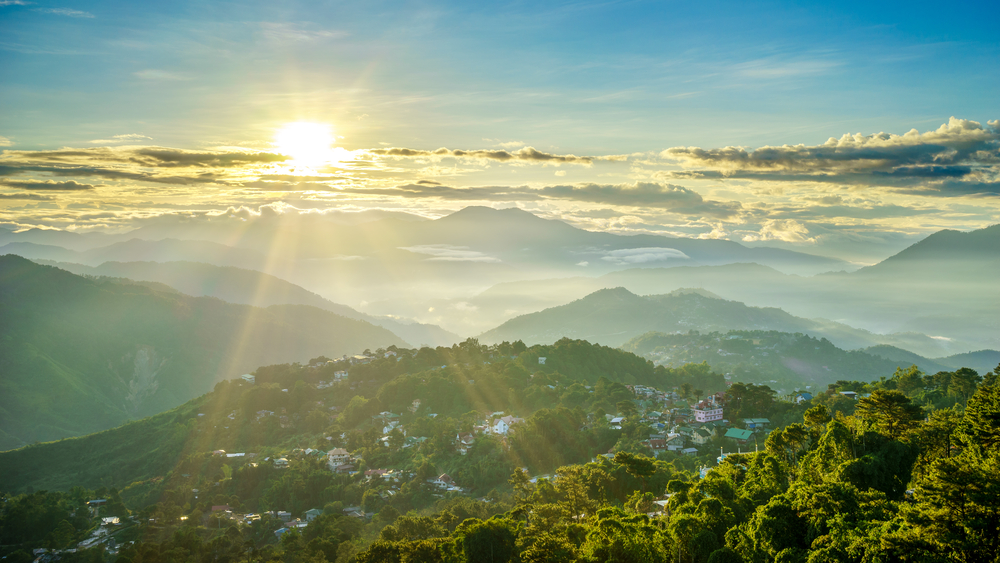
Japan and the Philippines offer diverse tourism experiences, featuring natural wonders, historical landmarks, and engaging activities that cater to a wide spectrum of travelers, seeking adventure, cultural immersion, and opportunities to save money through cost-effective travel options.
Japan's landscapes boast majestic mountains, serene gardens, and picturesque cherry blossoms, making it a haven for nature enthusiasts. The country's cultural sites, such as ancient temples and traditional tea houses, invite visitors to immerse themselves in rich heritage.
On the other hand, the Philippines is renowned for its stunning beaches, crystal-clear waters, and vibrant underwater ecosystems, drawing in beach lovers and diving enthusiasts alike. Both destinations offer various budget-friendly accommodations and local dining experiences, enabling travelers to explore without breaking the bank.
Popular Tourist Destinations
The popular tourist destinations in Japan and the Philippines encompass iconic landmarks, historical sites, and vibrant urban hubs, attracting visitors from around the world to immerse in the cultural tapestries and historical legacies of these captivating nations.
Japan, renowned for its juxtaposition of ancient traditions and modern innovation, boasts an array of compelling attractions. The majestic Mount Fuji, a UNESCO World Heritage site, stands as an emblem of Japan's natural beauty and spiritual significance. The historic city of Kyoto, with its opulent temples, serene gardens, and traditional teahouses, offers a glimpse into Japan's timeless cultural heritage. On the other hand, the vibrant metropolis of Tokyo pulsates with energy, featuring futuristic skyscrapers, bustling markets, and the serene allure of the Imperial Palace.
Meanwhile, the Philippines captivates travelers with its diverse tapestry of natural wonders and historical treasures. The mesmerizing rice terraces of Banaue, dubbed as the eighth wonder of the world, showcase the ingenuity of ancient Filipino engineering. The historic walled city of Intramuros in Manila, with its well-preserved Spanish colonial architecture and charming cobblestone streets, provides a fascinating insight into the country's colonial past. The idyllic beaches of Boracay and Palawan beckon visitors with their pristine sands and crystal-clear waters, offering a tranquil retreat amidst the paradisiacal beauty of the Philippines.
Cultural and Historical Sites
The cultural and historical sites of Japan and the Philippines showcase a tapestry of heritage, featuring landmarks such as Cebu Island and historical sites associated with figures like the Supreme Commander Allied Powers, offering glimpses into their rich historical narratives and collective memories.
Japan's rich cultural and historical tapestry is captured in its remarkable architectural marvels such as the awe-inspiring Himeji Castle, a UNESCO World Heritage Site revered for its stunning white exterior and masterful defensive design. Likewise, the timeless elegance of Kyoto's Kinkaku-ji Temple, adorned with gold leaf, stands as an emblem of Japan's architectural opulence.
The Philippines, on the other hand, is steeped in history with landmarks like Fort Santiago in Manila, a poignant symbol of the country's colonial past. The San Agustin Church, a UNESCO World Heritage Site, bears witness to the Philippines' Spanish colonial era, showcasing its ornate Baroque architecture and historical significance.
Both nations' cultural and historical landmarks serve as windows into the past, inviting visitors to explore the vibrant narratives that have shaped their societies and contributed to global heritage.
Natural Wonders and Activities
The natural wonders and engaging activities in Japan and the Philippines invite travelers to explore diverse landscapes, embark on adventure pursuits, and savor budget-friendly travel options that cater to a spectrum of preferences, seeking both luxury and cost-effective experiences.
In Japan, travelers can immerse themselves in the tranquility of cherry blossom gardens, delve into the serenity of ancient temples, or embark on thrilling hikes up Mount Fuji, offering an array of experiences for nature enthusiasts and adventure seekers alike.
In contrast, the Philippines boasts stunning natural wonders such as the mesmerizing rice terraces of Banaue, the picturesque beaches of Palawan, and the adrenaline-inducing surfing spots in Siargao. Engaging in water sports, island-hopping, and diving adventures in the Philippines is an unmissable opportunity for those seeking an immersive tropical escapade.
Both destinations offer a rich tapestry of ecological diversity, ensuring memorable experiences for every traveler.
Top Resorts in the Philippines
Amanpulo, Palawan

Located on the secluded island of Pamalican, Amanpulo is an exclusive paradise embodying tropical tranquility. Its luxurious villas and casitas are spread along pristine white-sand beaches, offering unparalleled privacy and access to the crystal-clear waters of the Sulu Sea. The resort is renowned for its world-class spa, exceptional dining experiences, and a wide range of water sports and island activities, making it a perfect retreat for those seeking ultimate relaxation and adventure in harmony with nature.
El Nido Resorts, Pangulasian Island, Palawan

Often referred to as the “Island of the Sun,” Pangulasian Island is part of El Nido Resorts, offering stunning views of both sunrise and sunset over the Bacuit Bay. This eco-luxury resort provides a blend of Filipino design and modern amenities in its spacious villas, with activities centered around the incredible biodiversity of El Nido's marine and terrestrial environments. Guests can indulge in snorkeling, diving, kayaking, and island-hopping tours, embracing the natural beauty of Palawan.
Click here to get rates from Booking.com.
Click here to get rates from Agoda.com.
Shangri-La's Boracay Resort and Spa, Boracay

Set in the heart of Boracay's vibrant and crystal-clear waters, Shangri-La's Boracay Resort and Spa offers an exclusive sanctuary. It features luxurious villas and suites with breathtaking sea views, private beaches, a range of fine dining options, and a spa set amidst a lush hillside. The resort is ideal for travelers seeking a blend of relaxation, gourmet experiences, and water sports on one of the world's most famous beaches.
Click here to get rates from Agoda.com.
The Farm at San Benito, Batangas

A holistic wellness retreat located in the foothills of Mount Malarayat, The Farm at San Benito provides a unique escape focused on health, healing, and well-being. With its vegan cuisine, natural spa treatments, and a variety of wellness programs, including detox, yoga, and meditation, guests can enjoy a rejuvenating experience surrounded by nature. The resort's luxurious villas and suites are designed to offer tranquility and comfort in a serene setting.
Click here to get rates from Booking.com.
Click here to get rates from Agoda.com.
Atmosphere Resorts & Spa, Dumaguete, Negros Oriental

Situated on the lush coastline of Dumaguete, Atmosphere Resorts & Spa is a boutique resort that offers a perfect mix of tropical luxury and dive adventure. Specializing in scuba diving, the resort provides access to some of the world's best muck diving sites, with the renowned Apo Island nearby. Its spacious accommodations, spa, and yoga classes cater to those looking for a wellness and adventure holiday in an intimate and relaxed environment.
Each of these resorts provides a unique glimpse into the diverse beauty and hospitality that the Philippines has to offer, making them top choices for travelers seeking luxury, adventure, and relaxation.
Click here to get rates from Agoda.com.
Top Resorts in Japan
Japan is renowned for its stunning natural landscapes, rich cultural heritage, and exceptional hospitality, making it a premier destination for resort-goers. From the snow-capped peaks of Hokkaido to the subtropical beaches of Okinawa, Japan offers a diverse range of resorts catering to all preferences, whether you're seeking relaxation, adventure, or a cultural experience. Here are the top 5 resorts in Japan, each offering a unique glimpse into the country's beauty and traditions.
Hoshinoya Tokyo

Nestled in the heart of Japan's bustling capital, Hoshinoya Tokyo is a sanctuary of tranquility and luxury. This ryokan (traditional Japanese inn) blends the best of Japanese craftsmanship and hospitality with modern comfort, making it a perfect urban retreat. Guests can enjoy onsen baths fed by natural hot springs, exquisite kaiseki (multi-course) dining, and the serene atmosphere of a traditional Japanese garden, all while being just minutes away from Tokyo's famous landmarks.
Click here to get rates from Agoda.com.
The Windsor Hotel Toya Resort & Spa, Hokkaido
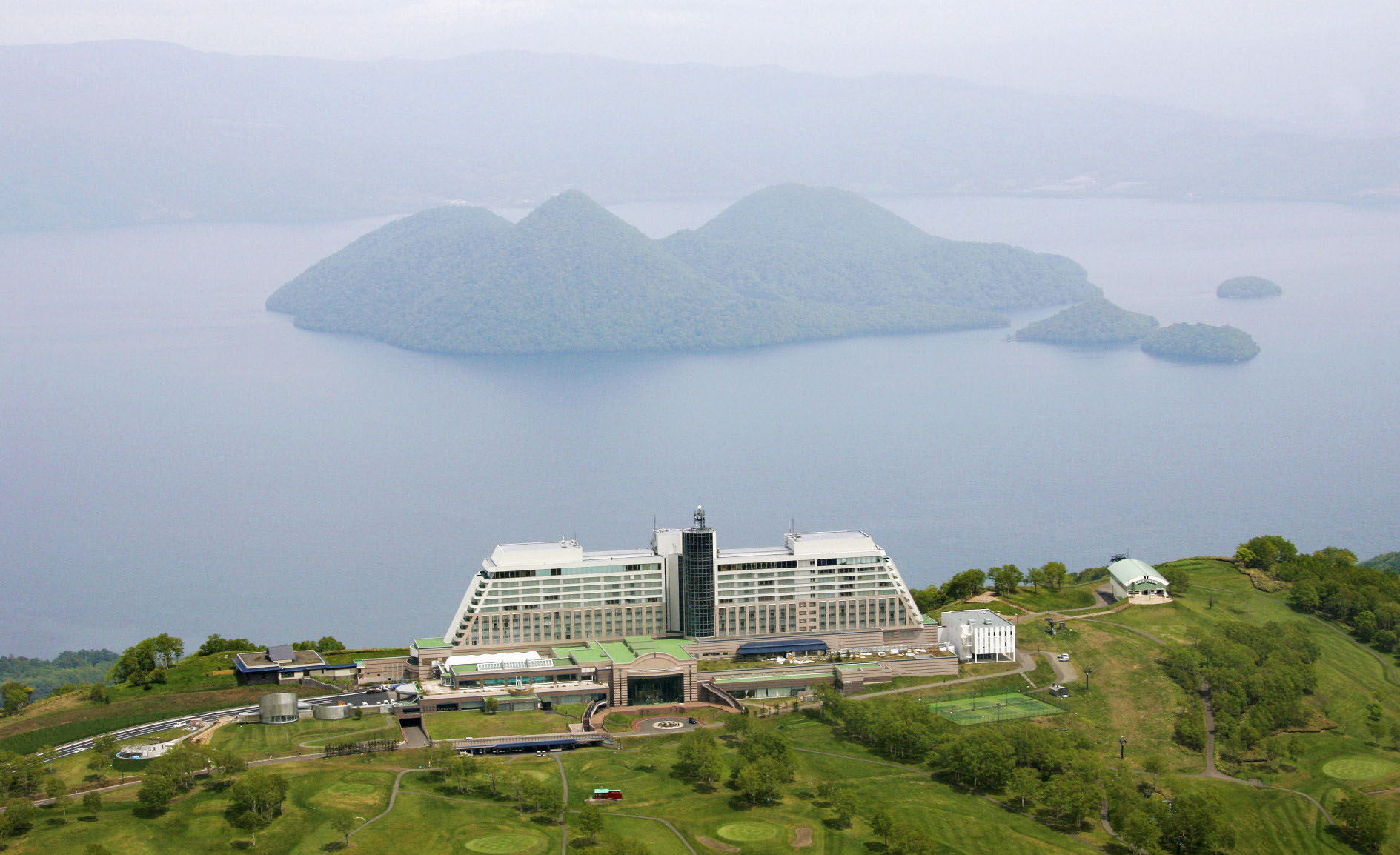
Perched atop a hill overlooking Lake Toya, with commanding views of the surrounding mountains and the Pacific Ocean, The Windsor Hotel Toya Resort & Spa offers a luxurious escape in Hokkaido's breathtaking landscape. It's renowned for its exceptional service, spacious accommodations, and a variety of dining options. The resort also serves as a gateway to Hokkaido's natural wonders, including hot springs, ski slopes, and hiking trails, making it ideal for nature lovers and adventure seekers.
Click here to get rates from Booking.com.
Click here to get rates from Agoda.com.
Amanemu, Ise-Shima National Park, Mie Prefecture
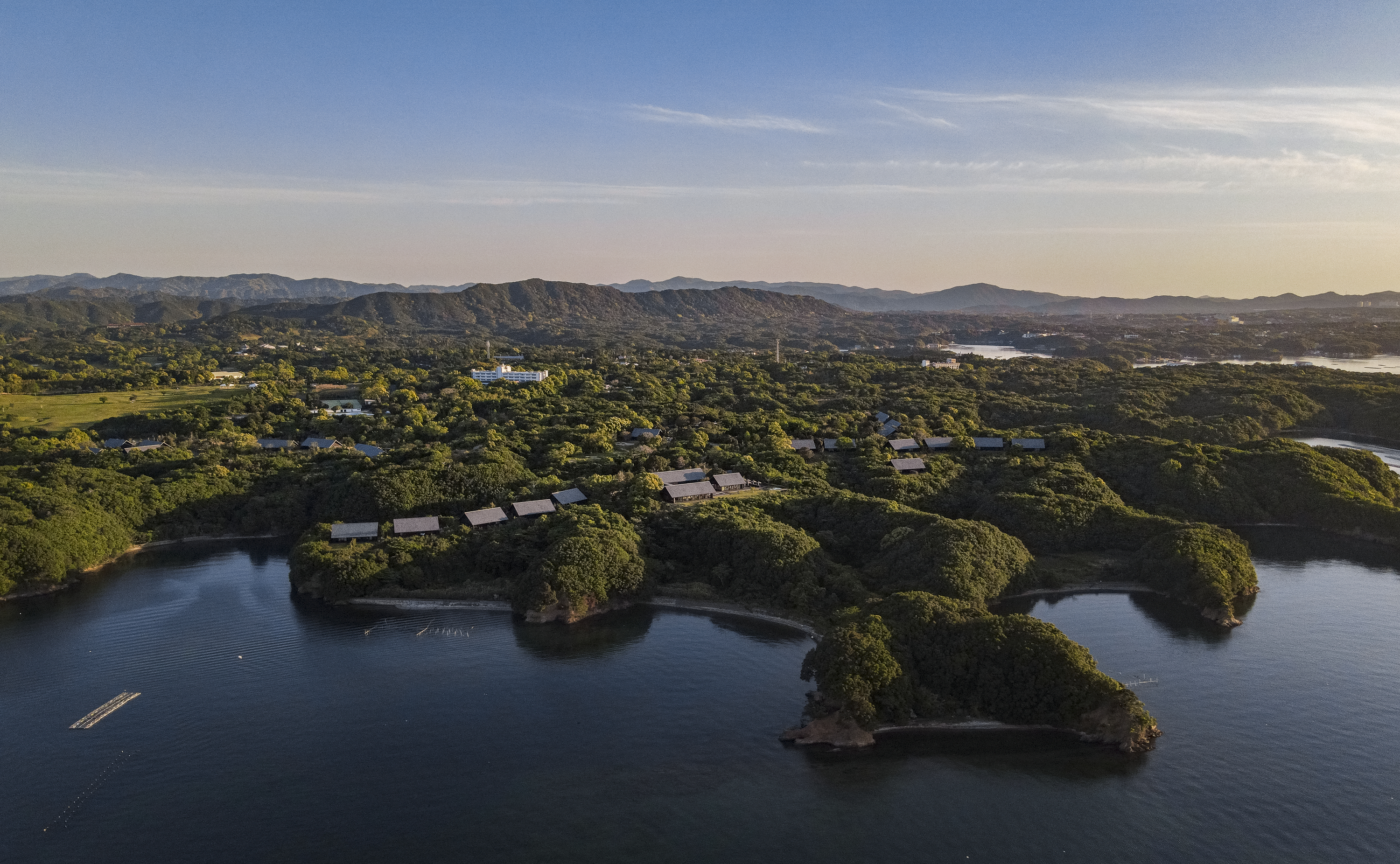
Set in the serene Ise-Shima National Park in Mie Prefecture, Amanemu embraces the ancient Japanese tradition of onsen (hot spring) bathing. This secluded resort offers minimalist, yet luxurious accommodations with private onsens, panoramic views of the Ago Bay, and a focus on wellness and relaxation. Guests can also explore the rich cultural heritage of the area, including the Grand Shrine of Ise, one of Japan's most sacred Shinto sites.
Click here to get rates from Agoda.com.
Ritz-Carlton, Okinawa

Located on the tropical island of Okinawa, the Ritz-Carlton offers a luxurious beachfront experience with a blend of American, Chinese, and native Okinawan influences. The resort is surrounded by pristine beaches, coral reefs, and the lush Yanbaru forest, offering guests a unique blend of cultural and outdoor activities. The Ritz-Carlton, Okinawa, is perfect for those looking to relax in luxury while exploring the rich history and natural beauty of the island.
Click here to get rates from Booking.com.
Click here to get rates from Agoda.com.
Niseko Village, Hokkaido
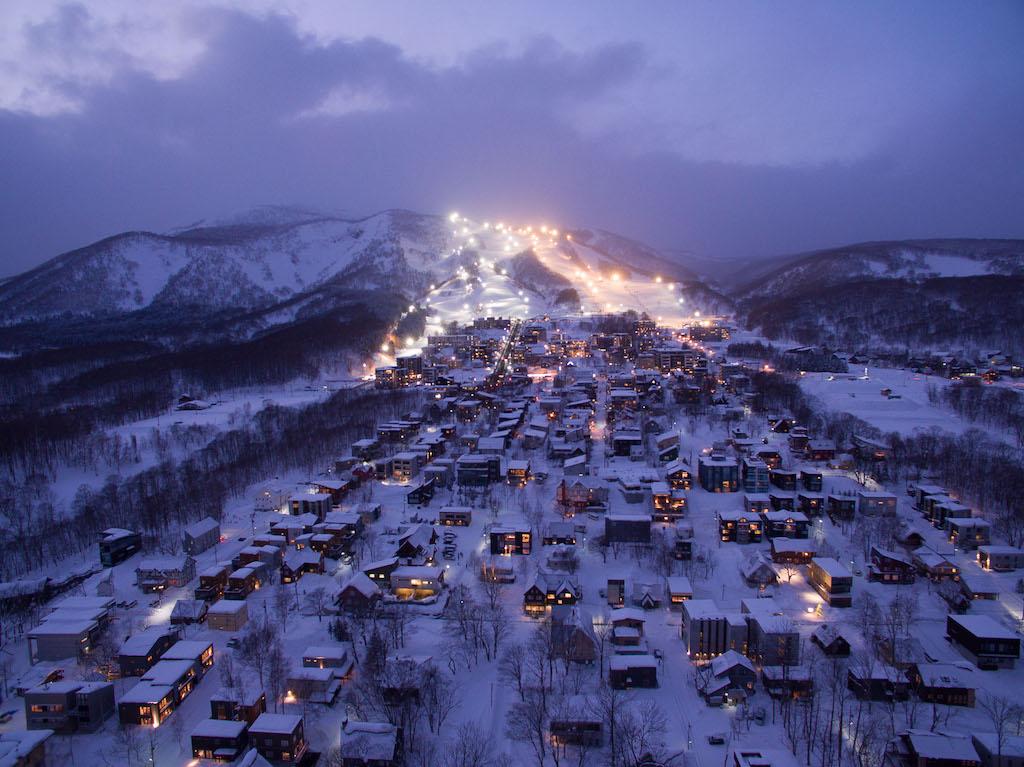
Niseko Village in Hokkaido is a premier destination for skiing enthusiasts, offering some of the best powder snow in the world. Beyond its renowned slopes, the resort provides luxurious accommodations, hot spring baths, and fine dining options, making it a favorite among both winter sports aficionados and those seeking a serene getaway. With its stunning alpine scenery and a wide range of activities year-round, Niseko Village is a paradise for outdoor lovers.
Click here to get rates from Booking.com.
Click here to get rates from Agoda.com.
Each of these resorts offers a distinct experience reflective of Japan's diverse landscapes and cultural heritage. Whether you're looking for an urban escape, a mountain adventure, a beachside retreat, or a cultural journey, these resorts provide the perfect setting to experience the beauty and hospitality of Japan.
Food and Cuisine
The food and cuisine of Japan and the Philippines showcase a diverse array of flavors, traditional dishes, and popular drinks, offering culinary journeys that reflect cultural legacies, regional specialties, and diverse options for both lavish dining and cost-effective gastronomic adventures.
Japanese cuisine is renowned for its delicate balance of flavors, such as the umami-rich sushi, sashimi delicacies, and the comforting warmth of ramen. In contrast, the Philippines boasts a vibrant culinary scene with dishes like adobo, sinigang, and lechon, reflecting a fusion of indigenous flavors and influences from Spanish, American, and Chinese cuisines.
Both countries also offer affordable street food options, from Japan's takoyaki to the Philippines' balut, enabling visitors to savor local delicacies without breaking the bank.
Traditional Dishes and Ingredients
The traditional dishes and indigenous ingredients of Japan and the Philippines capture the essence of regional flavors, cultural heritage, and historical influences, featuring culinary treasures from locales like Vigan and historical connections to the Imperial Japanese Army, enriching the culinary narratives of both nations.
Japan's traditional cuisine showcases a rich array of dishes such as sushi, sashimi, and tempura, often prepared with key ingredients like rice, seafood, and soy sauce, reflecting its long-standing culinary traditions.
In contrast, the Philippines is celebrated for its diverse range of native dishes, including adobo, sinigang, and lechon, which make use of indigenous ingredients like coconut milk, banana leaves, and calamansi, rooted in centuries-old practices passed down through generations.
The historical connections between Japan and the Philippines have contributed to the exchange of culinary techniques and ingredients, forming a unique fusion of flavors that continue to define the culinary landscapes of both nations.
Influences from Other Cultures
The culinary influences from other cultures on the food traditions of Japan and the Philippines reflect a vibrant amalgamation of flavors, techniques, and culinary fusions, showcasing the dynamic cross-cultural interactions between East Asian and Southeast Asian culinary heritages.
This culinary exchange has resulted in a rich tapestry of dishes that pay homage to historical connections and shared influences. In Japan, the introduction of Portuguese traders brought tempura to Japanese cuisine, while the Philippines embraced Spanish influences, evident in the use of ingredients like tomatoes, chili peppers, and garlic.
The fusion of flavors in both countries is also evident in their respective interpretations of cooking techniques, such as the delicate art of sushi-making in Japan and the bold, tangy flavors of the Philippine adobo.
Popular Food and Drinks
The popular food and beverage offerings in Japan and the Philippines present a diverse tapestry of culinary delights, featuring budget-friendly dining options, iconic street foods, and upscale gastronomic experiences that cater to a broad spectrum of culinary preferences and economic considerations.
With Japan renowned for its fresh sushi, savory ramen, and delicate tempura, and the Philippines boasting a rich array of adobo, lechon, and halo-halo, these countries offer a culinary odyssey that celebrates both traditional flavors and innovative culinary trends.
From the bustling izakayas and yakitori stalls of Tokyo to the vibrant food stalls lining the streets of Manila, one can savor the local cuisine's authenticity and cultural significance, all at a remarkably reasonable cost.
The fusion of fresh seafood, aromatic spices, and umami-packed ingredients creates a gastronomic landscape that captivates the senses and leaves a lasting impression on all who indulge in its diverse and delectable offerings.
Conclusion
In conclusion, the Philippines and Japan offer a fascinating glimpse into the rich tapestry of East Asian and Southeast Asian cultures, histories, and economies. Despite their geographical and climatic differences, both countries share a deep commitment to preserving their unique traditions while embracing modernity and innovation. Through their diverse landscapes, vibrant cultures, dynamic economies, and welcoming tourism sectors, they present a compelling narrative of resilience, growth, and mutual respect on the global stage. As we explore the intricate details of their societies, from the ancient rituals to the cutting-edge technologies, it becomes evident that the Philippines and Japan continue to shape their paths toward a future that honors their past while eagerly anticipating the opportunities of tomorrow.
Things to do in the Philippines
Things to do in Japan





